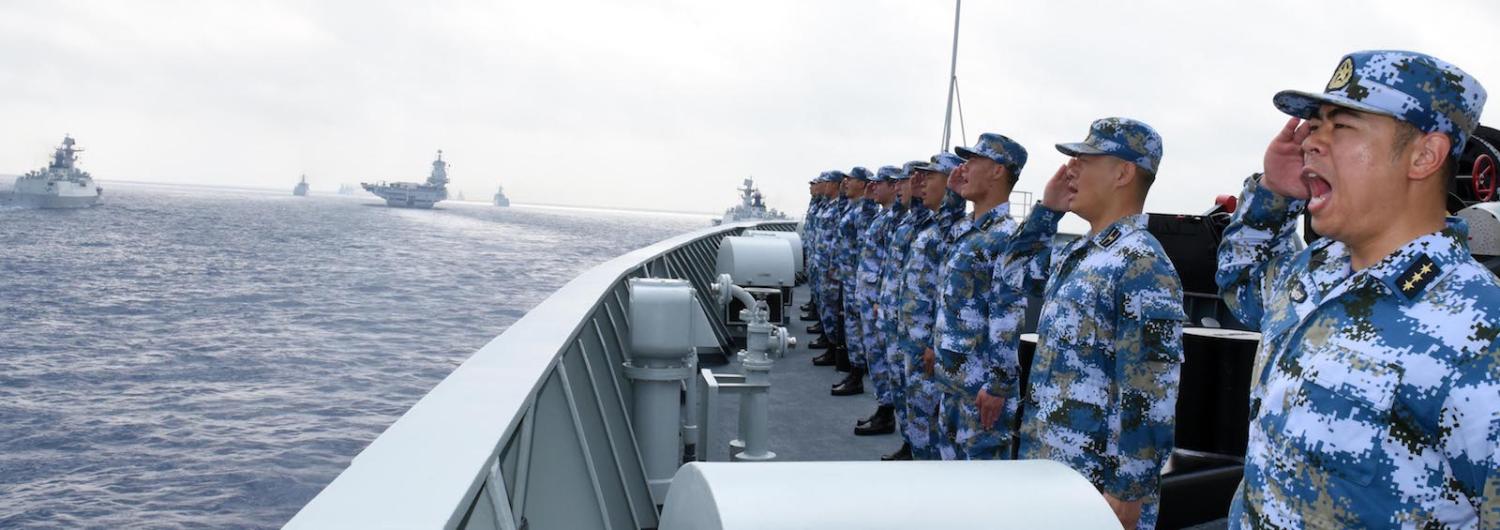Recent reports of problems with the People’s Liberation Army Navy (PLA-N) carrier-borne J-15 jet fighters have opened a small window on challenges facing China’s expanding navy, presenting a narrative counter to the recent wave of triumphalist advertisements of new capabilities. Stresses on aircraft associated with operating from the deck may have been greater than expected, causing fatalities and requiring modifications. Teething troubles are customary, but what is significant is that China’s navy has been forced to be much more critical of itself than in the past.
The navy is expanding so fast that personnel planners must be hard-pressed providing crews for the newly completed combatants, let alone filling the inevitable proliferation of staff and technical jobs ashore.
The PLA-N is experiencing an unforgiving operational environment at the same time as it faces the consequences of China’s one-child policy. The PLA-N now depends on the highly educated and technically literate middle class to crew its new fleet. It is only following the Western experience – long-term aircraft carrier operators such as the US Navy are well aware that the accident and fatality rates customary in the 1950s and 1960s would be completely unacceptable now. But the PLA-N may not find the adjustment easy.
The navy is expanding so fast that personnel planners must be hard-pressed providing crews for the newly completed combatants, let alone filling the inevitable proliferation of staff and technical jobs ashore. The enormity of the challenge has been disguised in part because the development of the PLA-N is not so much in increased numbers of ships, but in the leaps of capability and sophistication involved.
In 1986, the PLA-N had 18 destroyers and 31 frigates. Yet none had combat data systems or long-range anti-aircraft missiles. Only one carried a helicopter, and it is unlikely this aircraft could operate at night. No ship had anything more than the most basic radars or sonars. Little equipment was digital – practically everything was still Soviet-designed valve technology from the immediate post-war era.
In 2018, the PLA-N is at the point of commissioning a 10,000-ton air defence cruiser every year. It already commissions four guided missile destroyers, two guided missile frigates, and nine guided missile corvettes annually. These ships are fitted with advanced computers, data links, and long-range weaponry, as well as sensors with capabilities inconceivable to earlier generations.
But each advance in capability means additional complexity. Solid state equipment may be much more reliable than the valves of the past, but setting up complicated software-controlled systems and managing networks are highly demanding activities. Over-the-horizon tactics require greater precision and awareness of orders of magnitude than the old systems.
The PLA-N is clearly doing its best to advance its star performers. The commanding officers of the early anti-piracy deployments to the Indian Ocean are now admirals. But the great majority of the senior leadership and middle management of the PLA-N can have only a theoretical understanding of the capabilities of the force that is now being deployed.
Furthermore, the expansion has been so rapid that there must be very little chance to winnow out the inferior and mediocre – any personnel with operational experience with the new technology will have to be promoted and assigned to new construction. In the First World War, Britain’s Royal Navy struggled with the consequences of large-scale promotion past competence in a massively expanded fleet. Its operational performance reflected this, a lesson the PLA-N cannot ignore.
The PLA-N must be facing critical shortages not only of seagoing personnel. China must evolve a multidimensional naval combat force without infusions of external doctrine or expertise in the same way as members of the Western alliance. Australia, for example, is currently introducing the AEGIS air defence system to its fleet. Learning how to exploit the full potential of this capability would be practically impossible without the close support of the US Navy.
As its fleet expands, China must find and train the people to operate its tactical development teams, experimental units, training schools, certification organisations, and its future capability design and planning systems without assistance. None of these activities are trivial: all require a leavening of practical experience, as well as technical expertise.
The PLA-N will be eager to compare itself with and learn from other navies. But China’s overreach in the South China Sea has made this more difficult. A distrustful US has already ejected China from the biennial Rim of the Pacific (RIMPAC) exercise, and there is no prospect of a renewed invitation.
While exercises may continue with other nations in Southeast Asia, the latter are likely to be cautious in what they share. China’s increasing emphasis on bilateral exercises with Russia may provide some insights, but is unlikely to be enough. However sophisticated China’s intelligence gathering efforts – and the PLA-N will likely go all out to gather material on the USN and other navies – they are not the same as working directly alongside other services at sea.
The PLA-N is filled with extremely intelligent and hard-working people ambitious to make China a global naval power. Provided that the state remains willing to devote sufficient resources to the task, China’s navy will in the end be as capable as its leaders hope. There is no doubt that it is already formidable in many ways and is fit for many purposes, and against many possible opponents.
But the PLA-N still has a very long way to go before it reaches the necessary level of maturity to claim mastery of multidimensional operations in the contested environment of the open ocean.

